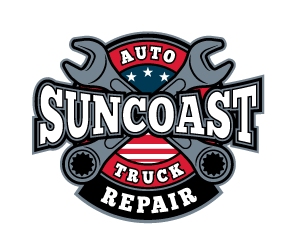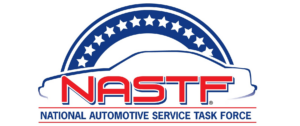Is your fleet running smoothly or in need of a tune-up? Keeping your fleet in optimal condition is essential for maximizing productivity, minimizing downtime, and ensuring the safety of your drivers. In this comprehensive guide, we’ll share invaluable insights and expert tips to help you revive your fleet and keep it running at its best.
The Importance of Fleet Repair and Maintenance
Maintaining a well-functioning fleet is crucial for businesses in the transportation, logistics, and delivery industries. A poorly maintained fleet not only leads to increased downtime and reduced efficiency but also poses safety risks to your drivers and other road users. By prioritizing fleet repair and maintenance, you can mitigate these risks, extend the lifespan of your vehicles, and ensure your operations run smoothly.
Common Fleet Repair and Maintenance Issues
Fleet vehicles are subject to wear and tear due to regular usage, environmental factors, and the nature of their operations. Some common issues that fleet managers face include engine problems, tire wear, brake system failures, electrical malfunctions, and transmission issues. Identifying these issues early on is essential to prevent them from escalating into major repairs that can be costly and time-consuming.
One of the most effective ways to address these issues is through regular inspections and maintenance. By conducting thorough checks, fleet managers can detect any potential problems and address them before they cause significant damage. It’s important to have a proactive approach to fleet repair and maintenance to avoid unexpected breakdowns and keep your vehicles in optimal condition.
Benefits of Regular Fleet Maintenance
Regular fleet maintenance offers numerous benefits to fleet managers and owners. Firstly, it helps to improve safety by ensuring that all vehicles are in good working condition. By addressing potential issues promptly, you can prevent accidents and protect your drivers, passengers, and other road users.
Secondly, regular maintenance helps to reduce downtime. When vehicles break down unexpectedly, it can disrupt your operations and lead to delays in deliveries or services. By adhering to a maintenance schedule, you can identify and resolve issues before they cause major breakdowns, minimizing the impact on your business.
Additionally, well-maintained vehicles are more fuel-efficient. Regular tune-ups, oil changes, and tire rotations can improve fuel economy, reducing your fuel costs and environmental impact. Moreover, maintaining your fleet can extend the lifespan of your vehicles, saving you money on premature replacements.
Essential Fleet Repair and Maintenance Tasks
To keep your fleet in optimal condition, there are several essential repair and maintenance tasks that should be performed regularly. These tasks include:
- Fluid checks and changes: Regularly check and change the oil, coolant, brake fluid, and other fluids to ensure they are at the correct levels and clean.
- Tire inspections: Check the tire pressure, tread depth, and overall condition of the tires to ensure they are safe and roadworthy.
- Brake system maintenance: Inspect the brake pads, rotors, and calipers regularly to ensure they are functioning properly and replace them if necessary.
- Battery checks: Test the battery and its connections to ensure they are working correctly and replace the battery if it is deteriorating.
- Electrical system inspections: Check the lights, fuses, and wiring to ensure the electrical system is functioning properly and address any issues promptly.
- Engine tune-ups: Regularly inspect the engine components, such as spark plugs, filters, and belts, to ensure they are in good condition and replace them as needed.
- Transmission and drivetrain maintenance: Inspect the transmission fluid, driveshaft, and other drivetrain components to ensure they are working efficiently and address any issues promptly.
- Exterior and interior cleaning: Regularly clean and maintain the exterior and interior of the vehicles to prevent rust, corrosion, and deterioration.
By performing these tasks on a regular basis, you can detect and address any issues before they become major problems, ensuring the longevity and reliability of your fleet.
Creating a Fleet Repair and Maintenance Schedule
To effectively manage fleet repair and maintenance, it is crucial to establish a comprehensive schedule. This schedule should outline the regular maintenance tasks that need to be performed and the intervals at which they should be completed. It is recommended to consult the manufacturer’s guidelines and recommendations for each vehicle in your fleet to determine the appropriate maintenance schedule.
When creating a maintenance schedule, consider factors such as mileage, engine hours, and time since the last maintenance. Keep track of each vehicle’s maintenance history to ensure that all necessary tasks are completed on time and that no vehicles are overlooked. Utilize fleet management software or spreadsheets to help you keep track of maintenance schedules and streamline your processes.
Choosing the Right Fleet Repair and Maintenance Provider
Selecting the right repair and maintenance provider is crucial for the overall health of your fleet. When choosing a provider, consider the following factors:
- Experience and expertise: Look for a provider with extensive experience in fleet repair and maintenance. They should have a deep understanding of the specific needs and challenges of your industry.
- Certifications and qualifications: Ensure that the provider’s technicians are certified and qualified to work on your fleet vehicles. They should have the necessary training and knowledge to handle the repairs and maintenance tasks required.
- Quality of service: Read reviews and testimonials to gauge the quality of service provided by the repair and maintenance provider. Look for a provider that has a reputation for delivering reliable, efficient, and thorough service.
- Range of services: Consider the range of services offered by the provider. Ideally, they should be able to handle a wide variety of repair and maintenance tasks, ensuring that all your fleet’s needs can be met in one place.
- Cost and value: While cost is an important consideration, it shouldn’t be the sole determining factor. Look for a provider that offers a balance between competitive pricing and high-quality service. Consider the long-term value they can provide to your fleet.
By carefully selecting a reputable and reliable repair and maintenance provider, you can ensure that your fleet receives the best care and attention it deserves.
Tips for Minimizing Fleet Repair and Maintenance Costs
While fleet repair and maintenance are necessary expenses, there are ways to minimize costs without compromising on quality. Here are some tips to help you reduce fleet repair and maintenance costs:
- Implement preventive maintenance: Regularly scheduled maintenance can help detect and address issues before they escalate into costly repairs.
- Train your drivers: Educate your drivers on proper vehicle maintenance practices, such as checking tire pressure, monitoring engine fluids, and reporting any issues promptly.
- Invest in quality parts: Opt for high-quality parts and components that are more durable and less likely to fail, reducing the need for frequent replacements.
- Monitor vehicle usage and driving behavior: Keep track of how your vehicles are being used and monitor driver behavior to identify any patterns or habits that may contribute to increased wear and tear.
- Utilize telematics and fleet management software: Implementing telematics systems and fleet management software can provide valuable insights into vehicle performance, enabling you to identify potential issues early on and optimize maintenance schedules.
- Consider outsourcing certain tasks: Depending on the size of your fleet and your internal resources, outsourcing certain repair and maintenance tasks can be a cost-effective solution. Evaluate the feasibility of outsourcing tasks such as tire rotations, oil changes, and minor repairs to specialized service providers.
By implementing these cost-saving strategies, you can effectively manage your fleet repair and maintenance expenses and ensure the long-term sustainability of your business.
The Role of Technology in Fleet Repair and Maintenance
Technology plays a significant role in modern fleet repair and maintenance practices. From telematics systems to fleet management software, advancements in technology have revolutionized how fleet managers monitor and maintain their vehicles. Here are some ways technology is transforming fleet repair and maintenance:
- Telematics systems: Telematics systems provide real-time data on vehicle performance, allowing fleet managers to monitor metrics such as fuel consumption, engine diagnostics, and driver behavior. This data can help identify potential maintenance issues and optimize maintenance schedules.
- Predictive maintenance: By analyzing data collected from vehicles, predictive maintenance algorithms can identify patterns and predict when certain components are likely to fail. This enables fleet managers to proactively address issues before they cause major breakdowns.
- Fleet management software: Fleet management software streamlines maintenance processes by automating tasks such as scheduling, tracking maintenance history, and generating maintenance reports. It provides a centralized platform for managing all aspects of fleet repair and maintenance.
- Mobile apps and digital inspections: Mobile apps and digital inspection tools allow technicians to conduct inspections and report issues directly from their mobile devices. This eliminates the need for paper-based processes and enables real-time collaboration between technicians and fleet managers.
By embracing technology and integrating it into your fleet repair and maintenance practices, you can improve efficiency, reduce costs, and enhance the overall performance of your fleet.
Fleet Repair and Maintenance Best Practices
To ensure the optimal repair and maintenance of your fleet, it is important to follow best practices. Here are some key practices to consider:
- Regularly inspect and maintain your vehicles: Conduct routine inspections and adhere to a maintenance schedule to ensure your vehicles are in good working condition.
- Train your drivers on maintenance practices: Educate your drivers on basic maintenance tasks and encourage them to report any issues promptly.
- Keep detailed maintenance records: Maintain comprehensive records of all repairs and maintenance tasks performed, including dates, parts used, and costs incurred. This information can help you identify trends and make informed decisions.
- Stay updated on industry trends and regulations: Keep abreast of industry trends, technological advancements, and regulatory changes that may impact your fleet repair and maintenance practices.
- Regularly review and optimize your maintenance processes: Continuously evaluate your maintenance processes and make improvements where necessary. Seek feedback from technicians and drivers to identify areas for enhancement.
- Communicate and collaborate with your repair and maintenance provider: Establish open lines of communication with your repair and maintenance provider. Regularly discuss maintenance needs, review service reports, and address any concerns or issues promptly.
By implementing these best practices, you can ensure that your fleet repair and maintenance processes are efficient, effective, and aligned with industry standards.
Conclusion
Reviving and maintaining your fleet is crucial for the success of your business. By prioritizing fleet repair and maintenance, you can maximize productivity, minimize downtime, and ensure the safety of your drivers. From creating a comprehensive maintenance schedule to choosing the right repair and maintenance provider, implementing these essential tips will help you optimize your fleet’s longevity, performance, and efficiency. Remember to leverage technology, follow best practices, and continuously review and improve your maintenance processes to keep your fleet in peak condition. Take control of your fleet’s maintenance today and experience the benefits of a well-maintained and reliable transportation operation.






